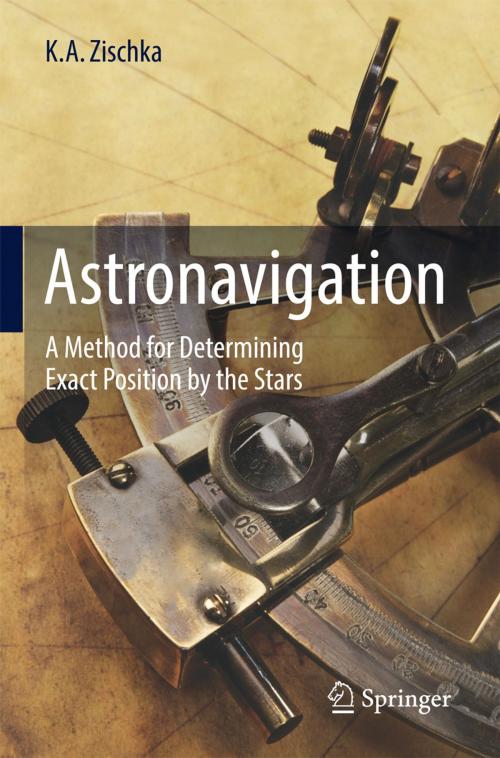Astronavigation
A Method for Determining Exact Position by the Stars
Nonfiction, Science & Nature, Technology, Aeronautics & Astronautics, Science, Physics, Astronomy| Author: | K.A. Zischka | ISBN: | 9783319479941 |
| Publisher: | Springer International Publishing | Publication: | May 30, 2017 |
| Imprint: | Springer | Language: | English |
| Author: | K.A. Zischka |
| ISBN: | 9783319479941 |
| Publisher: | Springer International Publishing |
| Publication: | May 30, 2017 |
| Imprint: | Springer |
| Language: | English |
This book acts as a manual for the ancient methods of navigating by the stars, which continue to provide the sailor or pilot with a timeless means of determining location. Despite the prevalence of GPS, a comprehensive set of formulae that can be evaluated on any inexpensive scientific calculator in the event of a catastrophic software or systems failure is a vital failsafe. It also serves as a living link to centuries of explorers from centuries past.
Beginning with the basics of positional astronomy, this guide moves on to the more complex math necessary to understand the ephemerides, tables showing the future positions of the stars and planets. These astronomical almanacs were the satellite navigation of their day. The objective of this book is twofold: to provide the reader with a concise, comprehensible manual on positional astronomy as it applies to astro-navigation and to furnish the concise algorithms for finding the position of the Sun and various navigational stars at any given instant.
In a world where too many mariners and aeronauts rely solely on technology and are vulnerable to solar flares, electrical issues, and the like, this knowledge can be a life-saving backup, not to mention a fascinating study in its own rights. Included is an exact mathematical way to determine your position in the air or on the sea far more quickly and accurately than by using the old celestial navigational method, without even needing to know or understand the underlying mathematics. There is even a section that teaches how to measure the azimuth of a star using an analog wrist watch so if a sextant gets damaged, locating position is still possible. This book offers mathematicians and adventurers a way to determine position when the skies go dark.
The U.S. Navy has recently realized that their electronic navigation systems are vulnerable to cyberattack, and as a result has instructed the Naval Academy to begin teaching celestial navigation again.
This book acts as a manual for the ancient methods of navigating by the stars, which continue to provide the sailor or pilot with a timeless means of determining location. Despite the prevalence of GPS, a comprehensive set of formulae that can be evaluated on any inexpensive scientific calculator in the event of a catastrophic software or systems failure is a vital failsafe. It also serves as a living link to centuries of explorers from centuries past.
Beginning with the basics of positional astronomy, this guide moves on to the more complex math necessary to understand the ephemerides, tables showing the future positions of the stars and planets. These astronomical almanacs were the satellite navigation of their day. The objective of this book is twofold: to provide the reader with a concise, comprehensible manual on positional astronomy as it applies to astro-navigation and to furnish the concise algorithms for finding the position of the Sun and various navigational stars at any given instant.
In a world where too many mariners and aeronauts rely solely on technology and are vulnerable to solar flares, electrical issues, and the like, this knowledge can be a life-saving backup, not to mention a fascinating study in its own rights. Included is an exact mathematical way to determine your position in the air or on the sea far more quickly and accurately than by using the old celestial navigational method, without even needing to know or understand the underlying mathematics. There is even a section that teaches how to measure the azimuth of a star using an analog wrist watch so if a sextant gets damaged, locating position is still possible. This book offers mathematicians and adventurers a way to determine position when the skies go dark.
The U.S. Navy has recently realized that their electronic navigation systems are vulnerable to cyberattack, and as a result has instructed the Naval Academy to begin teaching celestial navigation again.















